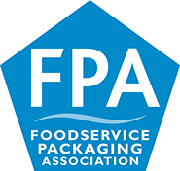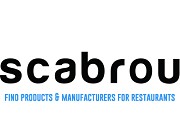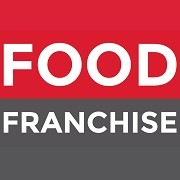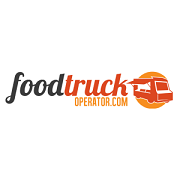Your Restaurant’s Comeback Story: Why We’re Optimistic About the Future of the Industry
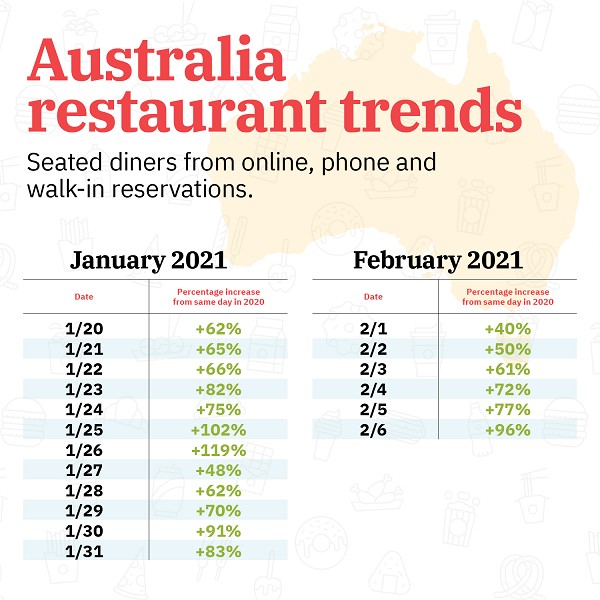

There is hope for restaurants! Despite the obvious negative impact of COVID-19, emerging data from rebounding countries tells a story of a restaurant comeback. Don’t believe us? Just one look at Australia will show you why we’re optimistic about the post-pandemic restaurant industry.
Since Australia’s reopening, guests are going out to eat more often than they were prior to the pandemic; additionally, new restaurants are opening at pre-pandemic rates. We can assume these same trends will carry over into other countries. While the pandemic was and continues to be tough on hospitality—closing dining rooms indefinitely and forcing legacy restaurants to close permanently—it has also provided an opportunity for restaurants to make adjustments that will have high-impact in sustaining business in the future. What was previously known by some, is now known by all—that having an online presence is a must have for modern restaurant success and survival.
But how do restaurants bring service online? While the technology stack for some is a combination of home-grown solutions and third-party vendors, such a compound of services is not always the most effective or cost-efficient, and often compromises guest experience. What restaurant’s need is to simplify. Streamline those digital operations into one platform, under one login, for one price (a process also known as replatforming). Restaurants that have invested in replatforming are expanding restaurant reach, delivering a better online guest experience, and have been able to gain momentum during the pandemic. Proactive restaurant owners are assessing their technology needs now so they’ll be poised for success when the industry has its turnaround—and it will.
Start planning your restaurant’s comeback story:
Your first impression with a guest no longer lives solely in the welcome of your ambiance or the delicious aroma lingering outside your doors; consumers are turning to the internet first when making their dining decisions. When capturing new guests starts at the search bar, these are the five practices you need to be the best at:
- Be easy to find.
Cut through the competitive noise—your website should be easy to find on a Google results page. You can ensure that your website is optimized for search by checking things like your website speed, connection to a Google My Business account, use of external links, image descriptions, accessibility conformance and individually indexing menu items. With an optimized website, guests can follow their food cravings straight to you.
- Make sure your website is user-friendly—that
means mobile friendly.
Did you know that 80% of restaurant searches take place on a mobile device? In 2019, nearly 77 percent of consumers said they check a restaurant’s website before paying it a visit or placing an order, and 70 percent said they had been discouraged from visiting a restaurant because of its website. Guests research online before they decide where to eat, and if they’re not impressed by your online presence, they’re very likely to choose somewhere else.
- Serve a great online menu.
Photos, photos, photos! Guests eat with their eyes first—in fact, dishes on an online menu with photography receive 2x as many online orders. Don’t make your guests click through multiple pages, zoom in to read tiny text on PDFs, and navigate away from your restaurant’s website to read reviews about your dishes. Your menu should keep hungry guests on your website, not send them looking for other dining suggestions.
What’s more? PDF menus aren't just unappetizing, the static text isn’t optimized for search and therefore doesn't do anything to bring online traffic to your website—they're keeping your restaurant hidden from hungry potential guests.
- Meet guests where they are.
Over half of adults say purchasing takeout or delivery food is essential to the way they live, and nearly 43% of guests planning to order takeout or delivery say the availability of online ordering would make them choose one restaurant over another. Guests want convenient dining solutions—and that means online ordering. There are a few options for managing online orders: you can use a third-party delivery service (Just Eat, Food Hub, Deliveroo, Hungry House, Uber Eats), which will publish your menu and coordinate orders on its own platform, or you can choose a restaurant technology tool that will help you offer online ordering from your own website. There are pros and cons to each. However, nearly two-thirds of people using online ordering and delivery prefer to order directly from a restaurant’s website.
- Keep the conversation going.
You don’t need a formal loyalty program to build a loyal customer base. Capture as much guest data as you can during the dining and ordering experience—the more you know about your guests the easier it is to cultivate a relationship over time (and ultimately drive additional transactions). Use marketing tools like email, social and SMS messaging to stay top-of-mind and send targeted offers—sometimes guests just need a little food tease to get them back through your door.
Building your comeback is easier said than done—but there is no shortage of restaurant technology available to help. Popmenu is the digital solution for restaurants that does it all: Menu management, website management, integrations with local listings and review sites, online ordering, gift cards, promotions, remarketing to guests, and so much more.
Get the platform that helps restaurants manage their entire digital presence—from first impression to the last bite. Check out our offer in the business revival guide and schedule a Popmenu demo today.
__________________________________________________________________________________________________
Data and insights in this article are sourced from the following: The State of the Restaurant Industry by OpenTable; 2021 State of the Industry Report by the National Restaurant Association; Nearly 70% of U.S. Diners Say A Restaurant's Website Has Discouraged Them from Visiting published by PR Newswire.













































